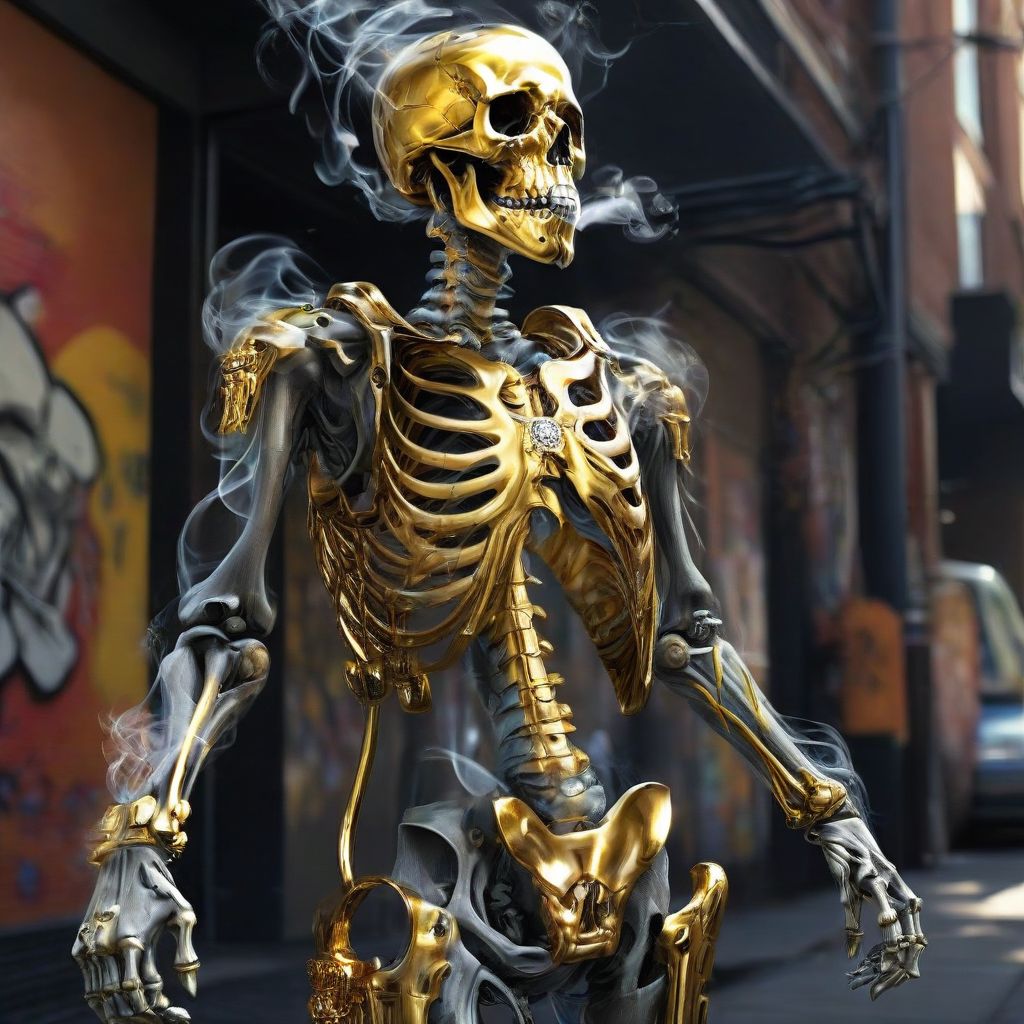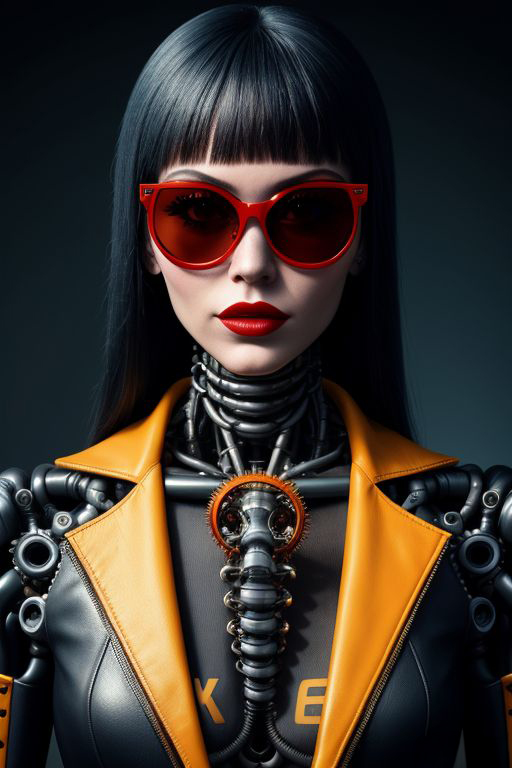In a metropolis where the streets were canvases and the skyline was a gallery of architectural audacity, Julius strut with the calm swagger of a man who owned every cobblestone and glass facade. Dressed in a blue suit that cut sharper than the edge of a credit card, he navigated the urban jungle like a panther in loafers.
Every day, the city spun madly around him: taxis screamed past, baristas juggled espressos, and digital billboards flickered with the fast, fluorescent lifeblood of consumerism. But Julius, cool behind his dark sunglasses, remained an oasis of retro calm in the frantic city tempo.
He wasn’t just a man in a suit; he was a statement. His pocket square? A splash of defiance against the drab, gray-suited armada marching alongside him. His sleek tie? A dark streak of tradition holding its own against the neon tides.
Today, however, was no ordinary bustling Tuesday. As the bold, pop-art style cityscape bronzed in the orange hue of a setting sun, Julius’s purposeful strides were leading to more than just the espresso shot waiting at his favorite mid-century-mod shack.
Unbeknownst to the casual observer, Julius was a connoisseur of secrets—urban legends hidden in plain sight amidst the city’s uproar. Today’s secret festered right in the heart of the metropolis’ labyrinth of the art district, where the buildings were as loud as the pop art background of his every morning.
Underneath a particularly nondescript arthouse—a facade as screamingly orange as his background this morning—lay the entrance to “The Underline”. Only a select few knew of it, and fewer still crossed its threshold. It was an underground speakeasy for the avant-garde, the rule-breakers, the modern-day philosophers of aesthetics.
Tonight, The Underline hosted a clandestine auction of coveted, forbidden artworks—pieces too provocative, too explosive for the tender sensibilities of the public gaze. Julius wasn’t just attending. He was part of the spectacle. His latest piece, “Urban Camouflage,” wasn’t just an artwork; it was an indictment of the blurring lines between privacy and surveillance in the digital age.
Art collectors, hungry for the thrill of owning something simultaneously enlightening and illicit, buzzed around the venue. Julius mingled, his outfit a blend of intention and statement, absorbing the electric anticipation in the air.
As “Urban Camouflage” rolled out, the crowd simmered down, and Julius felt the collective intake of breath. His piece—a series of seemingly mundane cityscapes which, when looked at through a specially designed app, revealed the ghostly silhouettes of people caught in moments of vulnerability—was a confrontation. A conversation starter in a dialog most dared not begin.
The auctioneer’s gavel fell, the bids flew, and the hushed tones of art brokers filled the gaps in conversation. Julius stood back, a smile playing on his lips, hidden behind the shadows of his sunglasses. Tonight, he had not only sold a painting; he had seeded a revolution.
As he left the underground, his blue suit merged with the shadows of the dusk-light city, his mission accomplished, but his mind already racing on to the next challenge, the next secret, the roads yet walked. In his world, style wasn’t just worn; it was wielded—a tool as sharp as any artist’s brush, carving out space for the new, the bold, the controversial. And Julius, like his city, never slept.










Leave a Reply